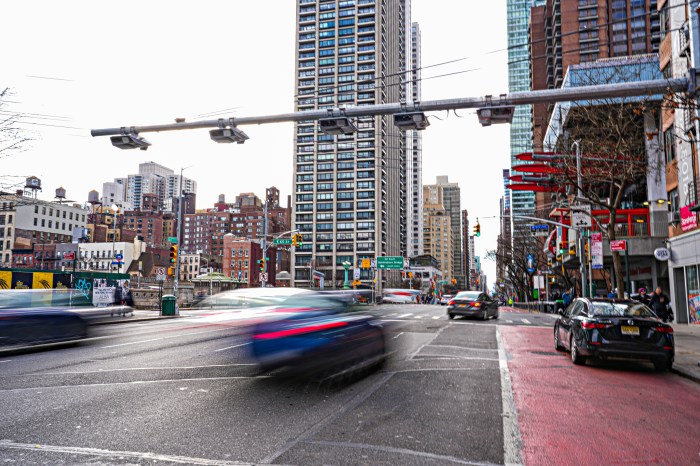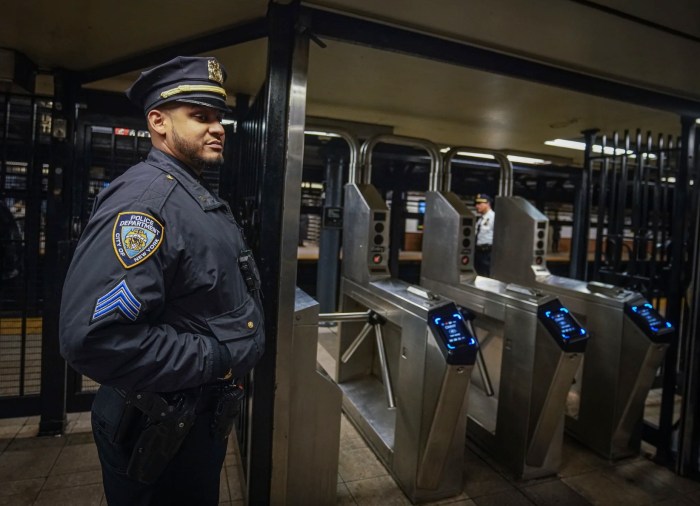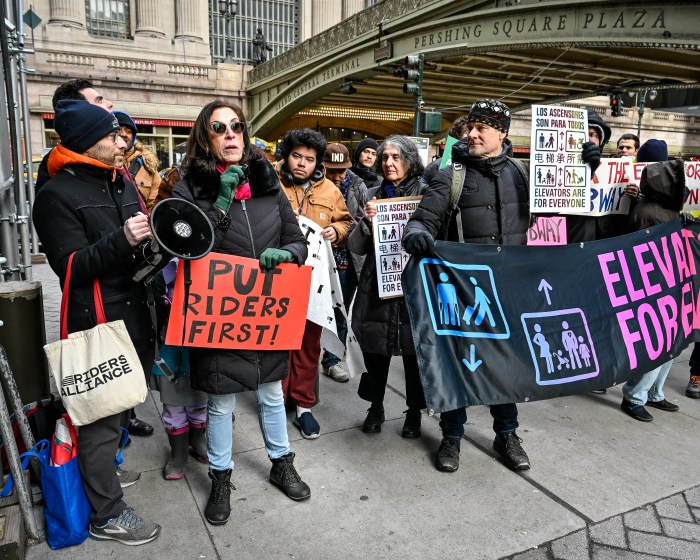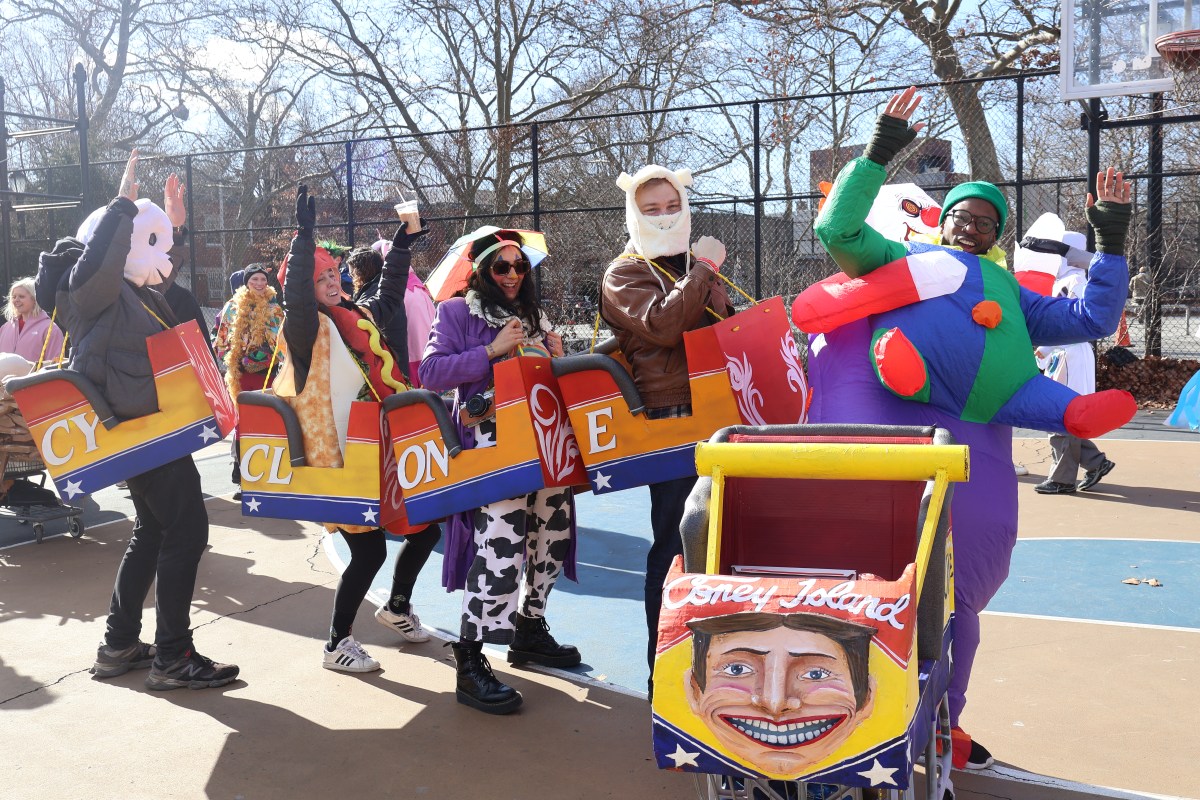
The city’s transportation network is a massive system of subways and tens of thousands of buses and taxis. But the 800,000 New Yorkers living with disabilities only get to use a fraction of what is available to the average person.
Nearly 25 years after the Americans with Disabilities Act of 1990 became law, more of the transportation network has opened up to people who use wheelchairs, walking aids or are visually impaired. Yet much of it is still off limits, frustrating advocates and the disabled riders who must pre-plan their travels well in advance and plot roundabout routes to get to their destinations.
“There are very critical gaps in performance that must be addressed if people with disabilities are going to be able to be part of the economy, the social life of the city,” said Susan Dooha, executive director of the Center for Independence of the Disabled, New York. “Progress is very painfully slow.”
The MTA is the only agency that must provide paratransit service, through Access-A-Ride, a door-to-door van service with a bad reputation that is expensive, to boot. Riders pay $2.50 but the trip gets a $66 subsidy. It’ll cost $450 million to operate this year and make 6.8 million trips, according to MTA projections. Facing a steep rise in cost and ridership, the MTA in recent years has made eligibility stricter, started brokering car services that now account for about 25% of paratransit trips and last year sent out nearly 31,000 “Zero-Fare” MetroCards, which provide free access to the system.
For Hollan George, a 26-year-old from Canarsie who has been in a wheelchair since 2010 after he was struck by cars while walking, ditching Access-A-Ride means he can travel on his own terms instead of waiting for a service that is “way off” half the time.
“I prefer transportation for my own reasons, being independent, being able to get around without having to depend on some transportation service to come pick me up — return to a state of normalcy, getting around myself,” George said.
But his main gripe with subway travel is the number of stations off limits to him — 82 out of 468 subway stations are fully accessible, with 89 set to be completed by the end of this year.
“I know in a fairy tale world, there would be elevators at every stop,” said George, who added that he would want at least 75% of the stations accessible.
But even that is fantasy given the subway system’s age and the feasibility of fitting certain stations with elevators. The MTA set a goal in 1994 to make 100 “key” stations accessible by 2020. “We wanted to allocate available resources at locations that would have the most impact,” MTA spokesman Kevin Ortiz said.
Over the next five years, the MTA plans to spend $561 million to bring the final 11 stations on their list of key stops up to ADA compliance. There is also $100 million in the plan for accessibility improvements at another 21 stations for a total of 40 wheelchair-accessible non-key stops.
Even with these improvements, using the subway requires planning ahead of time.
“It can be very difficult trying to figure out where to go, how to get there, what’s the correct way to do a lot of things,” said Dustin Jones, a 26-year-old advocate from Hollis who is a board member for Disabled in Action.
He co-created an app, Wheely NYC, so people in wheelchairs such as himself can travel on the rails with the least number of hurdles. The app devises routes through accessible stations and keeps track of problems with elevators.
But even with working elevators, getting on the train can be a hassle when the cars don’t align with platforms, creating a gap wheelchairs must climb over — Jones said his wheels have gotten stuck before.
Above ground, taxis are shouldering paratransit services, but the number of accessible cabs in the fleet is paltry. There are 572 yellow taxis and 809 green boro taxis that can take wheelchairs — just 4.2% and 14% of the fleets, respectively, according to the Taxi and Limousine Commission. The city wants half of the yellow car fleet accessible by 2020, funded in part through a 30-cent surcharge set to go into effect early next year.
“New York City is supposed to be the greatest city in the United States, in the world,” Jones said. “London has 100% wheelchair-accessible taxis. How are we the United States, New York City, and we can’t even get that done?”
The TLC offers a yellow taxi dispatch service in Manhattan that provides nearly 150 rides a day and a list of car services on its website that can send out a green boro taxi, but those companies can be unreliable.
Jessica Tambor, a 28-year-old from Whitestone who teaches computers after school, said bases she called offered more excuses than cars.
“Some said they didn’t have any available and some didn’t have any cabs at all or didn’t even know what I was talking about,” she said recounting her calls for a car on a Friday evening in Brooklyn this past July. She had a similar experience in August trying to book a car in Queens. (A TLC spokesman said in response that the lists will be reviewed for compliance.)
Closing the accessibility gap is on the mind of city officials. At an expo in downtown Brooklyn for Access to Independence Day last month, the city Department of Transportation’s ADA coordinator Quemuel Arroyo recalled how he took a yellow taxi to his NYU dorm following a 10-month rehab from a mountain biking accident seven years ago that required him to use a wheelchair. Friends made during the rehab process went home, he said.
“I find it unsettling that my experiences after rehab were atypical,” he said at the news conference. “They moved in with their families and they stopped school. They would tell me how hard it was for them to get around the city, they would say how awful they felt needing someone to help them navigate the streets and public transportation.”




































